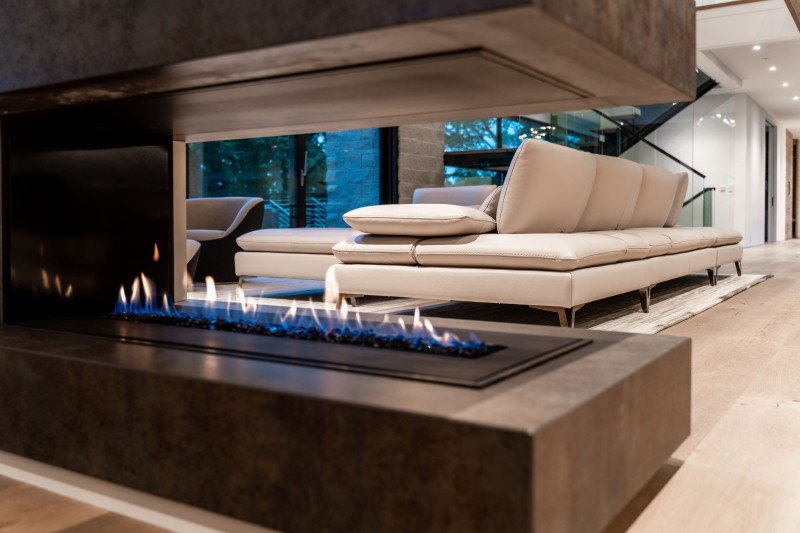Best Value Fireplaces: An In-Depth Guide
The fireplace has actually long been considered as the heart of a home, supplying warmth, atmosphere, and a centerpiece for celebrations. Nevertheless, browsing through numerous choices can be overwhelming, especially with budget constraints in mind. This article provides a useful guide on the very best value fireplaces, detailing their types, functions, and benefits to help homeowners make a sensible choice.
Types of Fireplaces
Fireplaces are available in a range of designs and types, each with different characteristics, expenses, and benefits. Here's a detailed look at the most typical kinds of fireplaces readily available in the market today.
| Kind of Fireplace | Description | Typical Cost | Pros | Cons |
|---|---|---|---|---|
| Wood-Burning | Burn logs to create heat and ambiance. | ₤ 1,500 - ₤ 5,000 | Authentic experience, natural heat | Needs routine upkeep, less efficient |
| Gas Fireplaces | Utilizes gas or propane to produce heat. | ₤ 2,000 - ₤ 5,000 | Easy to utilize, cleaner than wood | Minimal to gas supply, installation costs |
| Electric Fireplaces | Simulates flames with LED innovation and produces heat by means of electrical energy. | ₤ 200 - ₤ 3,000 | Easy installation, setup flexibility | Less authentic feel, higher operating costs |
| Pellet Stoves | Usage compressed wood or biomass pellets, offering an eco-friendly alternative. | ₤ 3,000 - ₤ 4,500 | Efficient, low emissions | Requirements electrical energy to run, requires storage for pellets |
| Ethanol Fireplaces | Burns ethanol fuel, producing flames that don't need a chimney. | ₤ 300 - ₤ 2,500 | No vents needed, portable | Greater fuel expense, safety concerns |
Factors to Consider When Choosing a Fireplace
Selecting the right fireplace is not simply about looks; it also includes useful factors to consider. Here are crucial elements to remember:
1. Budget plan
- Determine how much you want to spend. Keep in mind that installation and upkeep expenses can include up.
2. Space and Size
- Make sure the fireplace fits well within the space, thinking about both the space readily available and the heating requirements.
3. Fuel Type
- Pick the fuel source based upon accessibility, cost, and the type of ambiance you wish to attain.
4. Efficiency
- Select systems with high-efficiency rankings to guarantee you are getting the most value for your money in terms of heat output.
5. Visual Appeal
- Select a design and design that matches existing design and improves the total beauty of the space.
6. Laws
- Know regional regulations, permits, and building codes that may impact your fireplace installation.
Top Best Value Fireplaces
Based upon client evaluations, expert opinions, and overall value for money, here are a few of the very best value fireplaces presently readily available in the market:
1. DuraVent Pellet Stove
- Type: Pellet
- Average Cost: ₤ 2,000
- Emphasizes: Highly efficient with low emissions, making it an excellent choice for environmentally-conscious property owners.
2. Napoleon B36NTR-1
- Type: Gas
- Average Cost: ₤ 2,500
- Emphasizes: This fireplace is visually appealing and highly efficient, with a smooth style and adjustable flame.
3. Duraflame Electric Heater Stove
- Type: Electric
- Typical Cost: ₤ 200
- Highlights: Affordable and portable, best for smaller spaces or adding ambiance to a room without permanent installation.
4. Genuine Flame Juliet Gel Fireplace
- Type: Ethanol
- Average Cost: ₤ 300
- Emphasizes: An elegant alternative for modern areas that requires no venting, making it versatile and simple to set up.
5. Vogelzang VG5790
- Type: Wood-Burning
- Average Cost: ₤ 800
- Highlights: Offers a traditional wood-burning experience with a sleek modern style, best for those who cherish the classic ambiance.
Often Asked Questions (FAQs)
Q1: What is the most economical fireplace choice?
A1: Electric fireplaces tend to be the most cost-effective in terms of preliminary purchase price and setup, however can have higher operating expenses compared to gas or pellet systems.
Q2: Are gas fireplaces more secure than wood-burning fireplaces?
A2: Yes, gas fireplaces typically produce fewer emissions and position a lower risk of chimney fires as they do not produce creosote like wood-burning units.
Q3: Can I install a fireplace myself?
A3: While some electric fireplaces allow for easy self-installation, other types, particularly gas and wood-burning designs, usually require professional installation due to venting and safety issues.
Q4: How do I keep my fireplace?
A4: Regular upkeep consists of cleaning the chimney (for wood-burning fireplaces), examining for gas leaks (in gas systems), and ensuring proper ventilation for electric models.
Q5: Is an ethanol fireplace an excellent choice?
A5: Ethanol fireplaces are appealing for their modern design and ease of installation. Nevertheless, they can be less efficient and more pricey to run long-term compared to other fuel types.
Selecting a value fireplace that meets your aesthetic preferences and practical requirements involves thorough research study and factor to consider. By understanding Fireplaces Near Me of fireplaces, their associated expenses, and advantages, house owners can make educated decisions that will not just fit their budget plan however also boost the warm and welcoming atmosphere of their homes. Whether choosing an electric, gas, wood-burning, pellet, or ethanol model, the ideal fireplace waits for to transform your living space.

